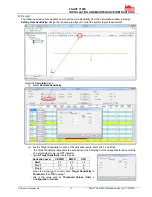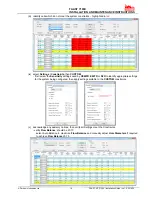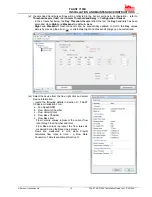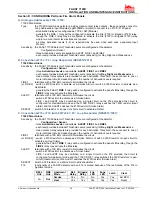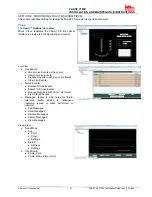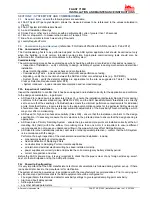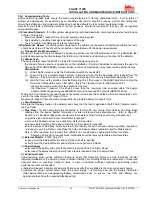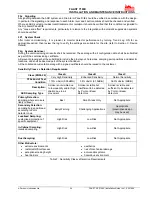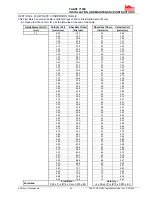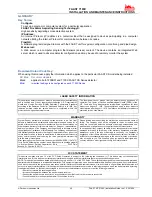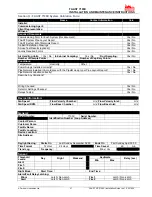
FAAST 7100X
INSTALLATION AND MAINTENANCE INSTRUCTIONS
© Pertronic Industries Ltd
24
FAAST XS (7100X) Installation Guide Iss 1.0, 201606
F2e Signalling
All signalling between the ASD system and Fire Alarm Panel/CIE should be verified in accordance with the design.
In particular the signalling and response to each Alarm level and Fault conditions should be checked and verified.
Where an ASD system provides local Disablement or Isolation it should be verified that this condition is signalled to
the Fire Alarm Panel/CIE
Any “cause and effect” requirements, particularly in relation to the integration with automatic suppression systems
should be verified
F2f
System Check
After initial commissioning, it is prudent to monitor detector performance by turning Trend Log ON for an
appropriate period, then review the log to verify the settings are suitable for the site (refer to Section C, Device
Details)
F2g System
Handover
During the commissioning all results shall be recorded. These along with all configuration data shall be submitted
as part of the commissioning certificate.
All relevant drawings shall be submitted to include the pipe layout, hole sizes, sampling point positions and detector
locations, and shall be deemed part of the system handover.
All the collated documentation along with a signed certificate should be issued to the customer.
Sensitivity Class vs Detection Requirements:
Table 7 : Sensitivity Class vs Detection Requirements
Class (EN54-20)
Class A
Class B
Class C
Very High Sensitivity
Enhanced Sensitivity Normal
Sensitivity
TF2x End of Test
Condition
1.15% obs/m (0.05dB/m)
3.4% obs/m (0.15dB/m)
36.9% obs/m (2dB/m)
Description:
Smoke is not visible due
to low quantity and/or high
dilution due to air
movement
Smoke is visible but
insufficient to be detected
by Point or Beam
detectors
Smoke is visible and
sufficient to be detected
by Point or Beam
detectors
ASD Sampling Type
Primary Detection:
sampling where smoke is
likely to travel
Best
Small Areas Only
Not Appropriate
Secondary Detection:
sampling holes positioned
according to Point
detector code
Early Warning
Challenging Applications
Appropriate
(prescriptive design
may be used)
Localised Sampling:
customised protection of
specific equipment
High Risk
Low Risk
Not Appropriate
In-Cabinet Sampling:
localised sampling
High Risk
Low Risk
Not Appropriate
Duct Sampling:
High Risk
Low Risk
Not Appropriate
Other Motivators:
•
extreme
environments
•
restricted/difficult
access
•
exceptional ceiling height
•
heat
barriers
•
aesthetics
•
risk of mechanical damage
•
anti-vandal
systems
•
hazardous
environment








